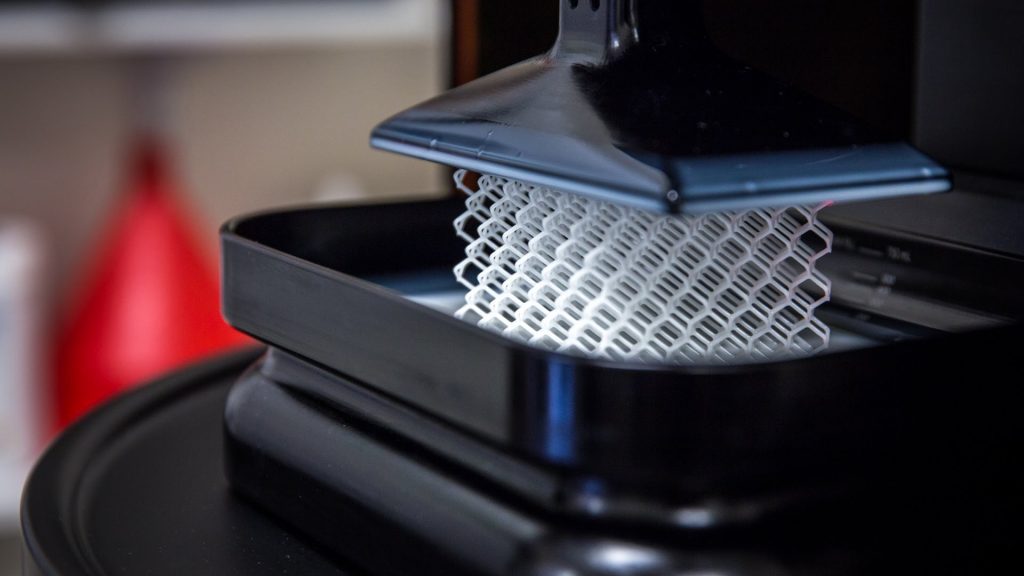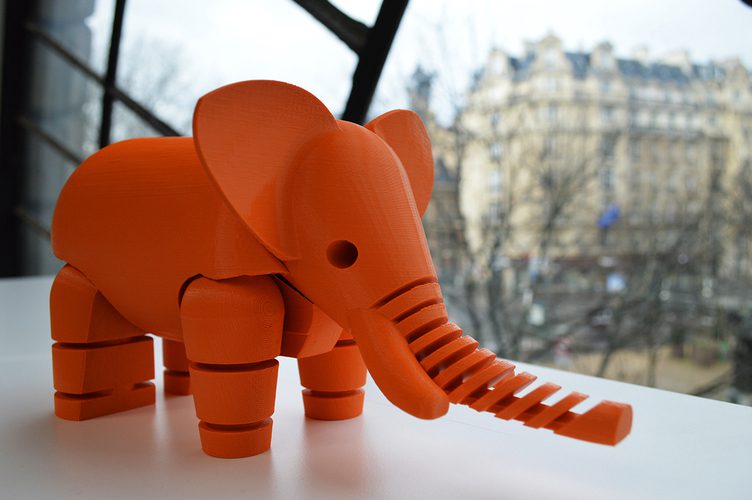No products in the basket.
The History of 3D Printing
In 1981, a man named Hideo Kodama from the Nagoya Municipal Industrial Research Institute publish his blueprints for a functional rapid prototyping system using photopolymers. The 3D model, was made via layers, for example, each object has 100 layers, from bottom to top, and they slowly build up to the top of the print.
In 1984, Charles Hull invented stereolithography, which allows designers to create 3D models using digital data, which is then used to print the model. They key to this invention, was the material Photopolymer. When Liquid Photopolymer meets a raw UV beam, the light exposed on the section of the model will instantly harden, with the moulded shape of the design. This was a massive step forward in the world of production, it would potentially save designers lots of money, as they were now able to model prototypes of their designs rather than investing in a manufacturing test.

3D Printer – Source: https://www.youtube.com/watch?v=O2thSsQrZUM
In 1992, 3D Systems managed to design the world’s first stereolithographic apparatus machine, which allowed inventors to build complex parts layer upon layer saving themselves plenty of time & money. The same year, DTM produced the world’s first selective laser sintering machine. Which, instead of projecting a UV beam onto a photopolymer, it used a powder, that again, once exposed to the UV beam, is instantly hardened. However, this was a very new design and still have lots of flaws. They were very expensive to own the 3D printing machine and the material quite commonly warped during the hardening stage, but they had lots of potential, to this day, that method of printing is yet to be perfected.
During 1992 – 2010;
The lead up to the 21st century was an interesting time for innovation. In 1999, the first 3D human organ was printed and implanted in a human. Scientists at Wake Forest Institute for Regenerative Medicine miraculously managed to print synthetic scaffolds of a human bladder. Which were then coated in living cells of patients. There was a very slim chance that the patient’s immune systems would reject the cells. This is because they were made from their own cells. Scientifically, this was a great decade for the history of 3D Printing. Scientists managed to print a working kidney, build a prosthetic leg & bio-printed the world’s first blood vessels. In the same decade, 3D printing was introduced to the open-source movement. Which essentially was a project to try and create a 3D printer, that prints itself, or at least most of the parts. By the late 2000s, ‘Darwin’ was released, which does exactly that, people everywhere suddenly had the power to 3D Print their own 3D Printers!
The manufacturing of 3D Printers had temporarily grabbed the attention of the public, likewise with the idea of mass customisation. In 2006, the first SLS Machine became commercially available to the public. Which opened a huge window of opportunity for on-demand manufacturing of industrial parts. The new inventions of the decade were topped off with the launch of the collaboration project, launched by Shapeways. They are essentially a marketplace for 3D Printing. It’s a place where consumers can give the designers feedback and help affordably innovate on and produce their products. MakerBot soon made an appearance, offering open-source DIY kits for makers to build their own 3D printers and parts.

3D Printed Elephant
From 2011 – Onwards;
Over the last few years, the prices of 3D printers has dramatically decreased, as they’re getting easier to manufacture. 3D Designers are in heaven now; with the ability to print gold or silver engagement rings. Newer models are now able to print in different materials. This has allowed designers to innovate massively and create the world’s first 3D-Printer unmanned aircraft. Soon enough, dentists will be able to print you a new pair of dentures & kids will be working on their art projects at home ready to bring it in and print it in class, 3D printing really is the future.
